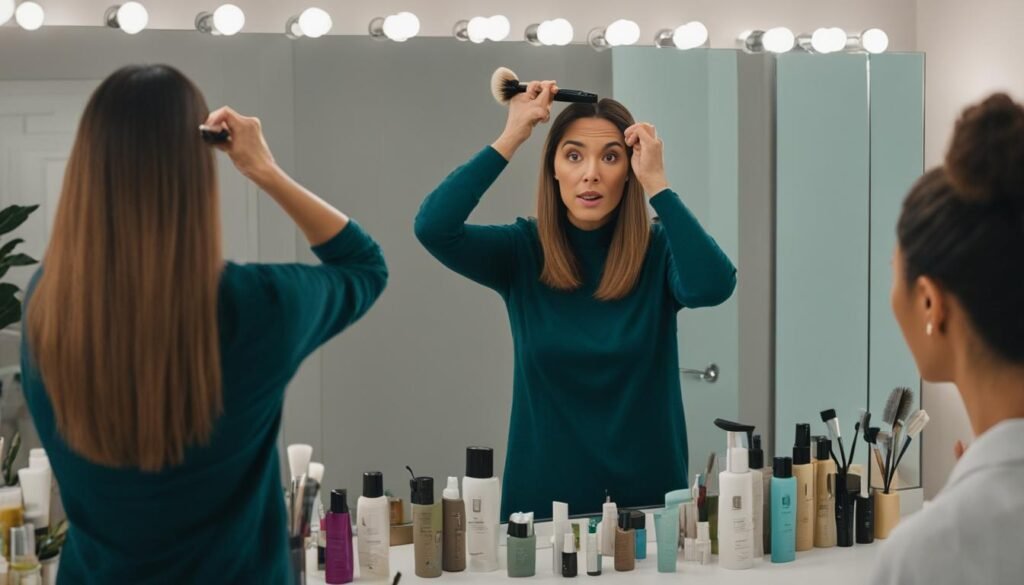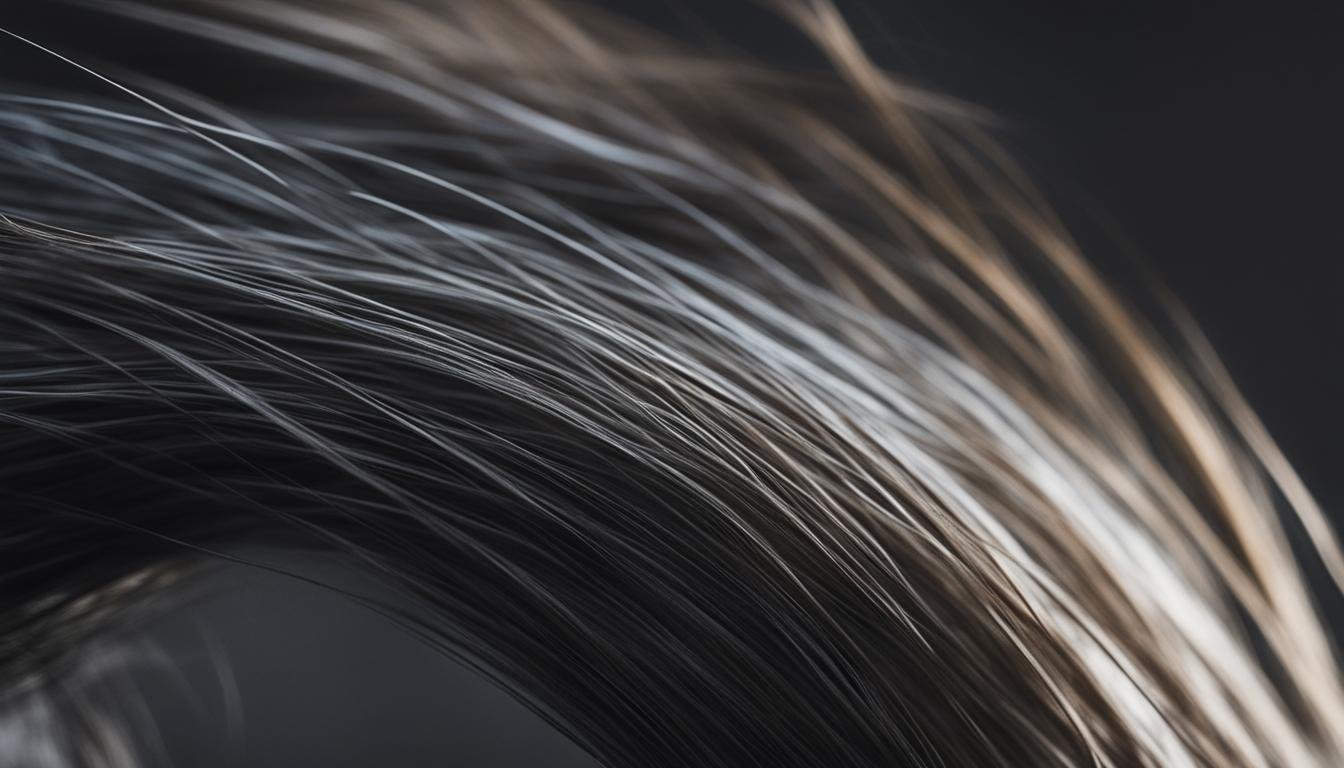If you’ve ever found yourself wondering why there is lint in your hair, you’re not alone. Lint in hair is a common issue that many people experience, and it can be quite frustrating. In this article, we will explore the causes of lint in hair, prevention measures, and effective techniques for removing lint from your precious locks.
Lint accumulates in hair due to a variety of factors. It can be a result of everyday environmental elements such as dust, dirt, and fabric particles that find their way into your hair. Additionally, product residue and oil, as well as friction from certain fabrics, hair tools, and even the shedding of dead skin cells, can contribute to lint buildup.
Curly and wavy hair types are particularly susceptible to lint accumulation due to their textured nature and the presence of conditioner residue and sebum. However, with proper care and hygiene practices, you can minimize the presence of lint in your beautiful mane.
In the coming sections, we will delve deeper into the causes of lint in hair, explore effective prevention measures, discuss the impact of lint on hair health, and provide tips for removing lint from your strands. By the end of this article, you will be equipped with the knowledge and tools to maintain lint-free, healthy-looking hair.
Causes of Lint in Hair
Lint in hair can be a frustrating and common problem for many individuals. Understanding the causes of lint buildup in hair is essential in effectively addressing and preventing this issue. Here are some common causes of lint in hair:
- Fabric particles from clothing and bedding: Lint can easily transfer from fabrics such as cotton, wool, or polyester, leading to buildup in the hair.
- Excessive oiling of the hair: Using excessive amounts of oil or oil-based products can create a sticky residue that attracts lint.
- Usage of certain hair brushes or combs: Some brushes or combs may have bristles or materials that tend to accumulate lint, thereby transferring it to the hair.
- Inadequate removal of lint during washing: Not properly rinsing or removing lint from hair during washing can allow it to linger and build up over time.
- Dry winter weather and static electricity: Dry environments and static electricity can cause hair strands to cling to lint particles, exacerbating lint buildup.
- Broken hair ends: When hair ends are damaged or split, they can trap lint, making it more visible and noticeable in the hair.
It’s also important to note that proper cleaning and maintenance of hair tools, such as brushes and combs, are crucial in preventing lint transfer. Regularly removing lint from hair can be achieved through the following methods:
- Regular washing: Washing hair with a gentle cleanser can help remove accumulated lint.
- Combing: Using a fine-tooth comb, gently comb through the hair to pick out any visible lint particles.
- Picking out lint: By manually picking out lint from hair strands, you can effectively eliminate it.
Remember, proactive hair care tips for lint removal can go a long way in maintaining lint-free, healthy-looking hair.
Hair Lint Prevention Measures
To prevent lint buildup in hair, there are several effective measures that can be taken. By incorporating these lint prevention strategies into your hair care routine, you can maintain clean, lint-free locks.
Use Lighter Oils
When it comes to hair oils, opting for lighter formulas can help minimize lint accumulation. Heavy oils can attract and trap lint particles, making them more noticeable in your hair. Look for lightweight oils that provide nourishment without weighing down your strands.
Keep Hair Tools Clean
Hair tools such as brushes and combs can harbor lint and transfer it to your hair. Regularly clean your hair tools to remove any accumulated lint. A fine-tooth comb can also help remove debris and lint from your hair, preventing it from settling and causing buildup.
Wash Hair Regularly
Regular washing is essential to remove accumulated lint from your hair. Use a gentle shampoo and conditioner to cleanse your hair thoroughly and eliminate any trapped lint. Pay special attention to the scalp and roots, where lint tends to collect.
Avoid Excessive Handling
Excessive handling and touching of the hair can transfer lint from your hands to your locks. Minimize touching your hair throughout the day and avoid running your fingers through it too often. This will help reduce the amount of lint that gets trapped in your hair.
Choose Satin Pillowcases and Bedding
Satin pillowcases and bedding can reduce friction between your hair and the fabric, minimizing lint transfer. The smooth surface of satin helps prevent lint from clinging to your hair while you sleep.
Maintain Good Hair Hygiene
In addition to the specific measures mentioned above, maintaining good overall hair hygiene is crucial for preventing lint buildup. Regular cleansing and conditioning of your hair, using suitable products for your hair type, can help keep your locks clean and free from lint.

| Lint Prevention Measures | Effectiveness |
|---|---|
| Using lighter oils | Effective in reducing lint accumulation |
| Keeping hair tools clean | Prevents lint transfer to hair |
| Washing hair regularly | Removes accumulated lint |
| Avoiding excessive handling | Reduces lint transfer |
| Choosing satin pillowcases and bedding | Minimizes lint friction and transfer |
| Maintaining good hair hygiene | Overall prevention and cleanliness |
Impact of Lint on Hair
While lint in hair does not have the same negative impact as dandruff or lice, it can still cause certain issues that affect hair health and appearance. Here are some of the consequences of having lint in your hair:
- Itchy Scalp: The presence of lint particles in your hair can lead to an itchy scalp, causing discomfort and irritation.
- Dull and Messy Hair: Lint can make your hair appear dull and messy. The accumulation of lint can give your hair an unkempt appearance, which is not ideal for a polished and put-together look.
- Scalp Injuries: Excessive scratching of the scalp due to lint-related itching can result in scalp injuries, such as cuts or abrasions. These injuries can further worsen if not properly treated.
- Tangling and Matting: Lint can get trapped in broken hair ends, making the hair more prone to tangling and matting. This can lead to increased hair breakage and difficulty in styling.
Regularly removing lint from your hair is crucial to maintain its health and appearance. Proper cleansing and conditioning can help minimize the presence of lint while promoting overall hair hygiene.
| Effect | Description |
|---|---|
| Itchy Scalp | The presence of lint particles can cause an itchy sensation on the scalp, leading to discomfort. |
| Dull and Messy Hair | Lint accumulation can make the hair appear dull and messy, compromising its overall look and style. |
| Scalp Injuries | Excessive scratching of the scalp due to lint-related itching can result in scalp injuries such as cuts or abrasions. |
| Tangling and Matting | Lint trapped in broken hair ends can increase the likelihood of tangling and matting, leading to hair breakage and difficulty in styling. |
Regularly removing lint from the hair through proper cleaning, conditioning, and using appropriate hair tools can help maintain lint-free, healthy-looking hair.
The Importance of Regular Lint Removal
Regularly removing lint from the hair is important to maintain hair health and appearance.
Minimizing Lint Accumulation
Proper cleansing and conditioning of the hair can help minimize the presence of lint.
Removing Lint from Hair
To effectively remove lint from the hair, there are a few simple techniques that can be employed. First, using a fine-tooth comb, gently pick out any lint or debris that may be trapped in your hair. Start at the roots and work your way down to the ends, being careful not to tug or pull on the hair. This method helps to dislodge lint particles and restore a smooth, lint-free look.
Another important step is to wash your hair regularly. This helps to eliminate any accumulated lint and maintain a clean and fresh appearance. Use a gentle, clarifying shampoo and make sure to thoroughly rinse your hair to ensure all lint is removed. Conditioning your hair afterwards can help to reduce static electricity and make it easier to comb through.
In addition to combing and washing, it’s essential to keep your hair tools clean and free of lint. Regularly remove any trapped lint from your brushes and combs, and consider soaking them in warm soapy water or using anti-bacterial sprays to sanitize them. This prevents further lint transfer and ensures that your tools are hygienic and ready for use.
Lastly, remember to avoid excessive handling and touching of your hair. The oils and debris from your hands can easily transfer to your hair and attract more lint. Instead, keep your hands away from your hair as much as possible, especially when your hair is freshly washed and has a higher chance of attracting lint. By implementing these simple practices, you can maintain lint-free, healthy-looking hair.
